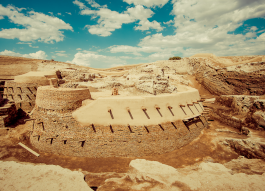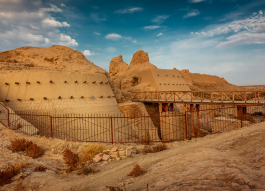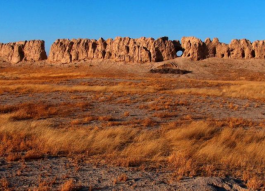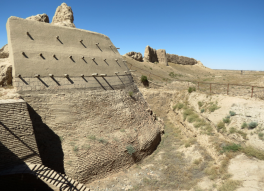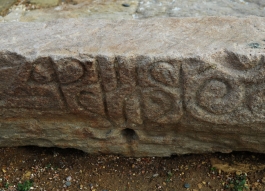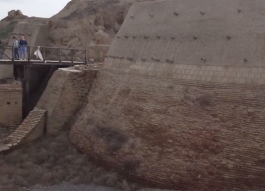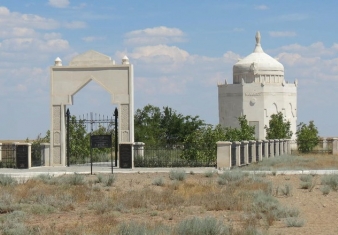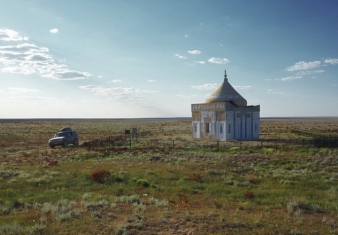
 Cultural heritage
Cultural heritage
43.5081, 67.8234
Just off the highway from Turkestan to Kyzyl Orda, in the province of South Kazakhstan, lies an intriguing reminder of times past. Sauran was once the biggest city in Kazakhstan, but history abandoned it for a new lover. Today, a large, romantic ruins remains.
When entering through the large, lime gates of the city, it’s immediately clear that Sauran was at one point a major node on the Silk Road. The expansive grass-covered ruins have been partly dug out, revealing a sophisticated system of underwater canals that kept this oasis thriving. Some restorative work has been carried out, clarifying the lay-out of the ancient city.
The city shifted its location on several occasions due to the changing course of the Syr Darya, on which it depended for water. Sauran has been mentioned in writing since the 10th century, but this location seems to have been inhabited from 13-14th century until 18th century.
It was one of only a few cities that survived the Mongol onslaught. The city administrators must have learned their lesson from nearby Otrar, which taunted the Mongols and was razed to the ground, with all inhabitants killed. As empires waxed and waned, Sauran adapted, becoming the capital of the Mongol White Horde, and later, a military fortress under Tamerlane.
In the end, people just gradually ditched it, for no other reason than that it was better elsewhere. Nearby Turkestan gained in importance, and Central Asia lost its mojo in general, becoming an easy prey for a rising Russia to take control.
The walls itself are still many meters high in places, crumbling elsewhere, providing an intimate atmosphere where you will be alone with bird song and cute little turtles, free to let your imagination feel up the passage of time. For now, you will be the only visitor. Unconfirmed claims that Tolkien got the name of the evil lord Sauron (from the tribe of Ainur, which is a local Kazakh tribe) from Lord of the Rings from here have not yet led to a boom in hobbit houses.

In 50 km from the modern city of Atyrau, there is one of perspective tourist routes, regional memorial estate "Khan Ordaly Sarajshyk" who opens all ancient history of the Kazakh people.
The grave site of the great Kazakh poet of the 19th century, free-thinker and inspirer of the rebellion of Makhambet Utemisov is situated in Inder, Atyrau region, 40 km to the south-east from the village Inderbor.
Atyrau region is rich in its architectural monuments of culture, one of them is considered to be Zhuban Mausoleum.
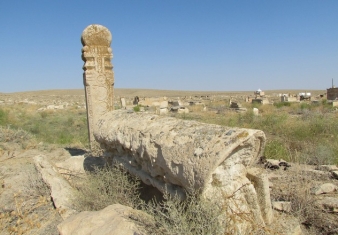
Senek reserve is an architectural monument of the XVII - XX centuries, it represents a necropolis consisting of several sepulchral constructions and an old mosque.
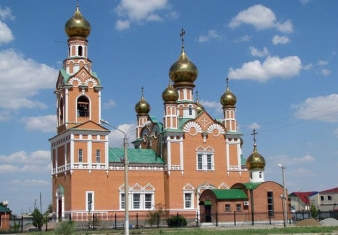
One of the oldest and most beautiful architectural monuments of the city - Uspenski Cathedral is located in the heart of the city of Atyrau, on Issatay Taimanov street, just a few steps from the main square.
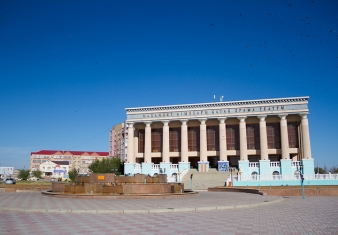
One of the leading places in the cultural life of Atyrau and the whole Atyrau region belongs to the Kazakh Drama Theater named after Makhambet Utemisov.














